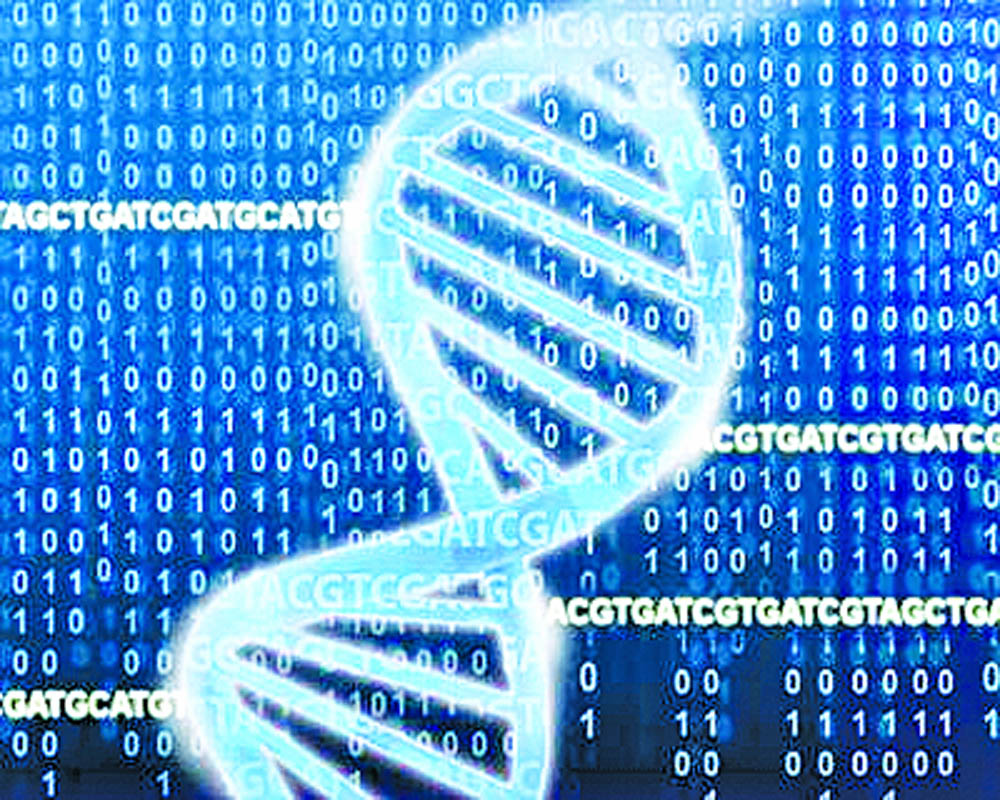Genome sequencing customises diagnostic procedures for diseases at a very nascent stage and provides personalised treatment
In 1990, The Human Genome Project was started which took 13 years for sequencing 20,000 genes and to understand the relationship between the genes and their work together. The idea behind genome sequencing is customizing diagnostic procedures for diseases at a very nascent stage and providing a personalized treatment and management option for individuals which goes against the “one size fits all” theory.
DNA Sequencing done at an affordable cost and in measured time can help in early diagnosis and targeted treatment of diseases. Genetic risks of developing diseases well before the actual symptoms appear can be detected especially for the young population to manage inherited diseases at the right time. It can also guide us for specific lifestyle changes that can prevent or prolong the appearance of certain diseases.
During the recent Pandemic that the world was struggling to cope with, genome sequencing enhanced our insight into the mutation of the SARS-CoV2 virus affecting its transmissibility and virulence. This has helped in rapid healthcare decisions and the development of diagnostic tests. This has further been the backbone to fight the COVID-19 crisis.
Taking this reactive to proactive step forward, Genomic sequencing can now help to live up to the idea of “Prevention is better than Cure”. With the advent of Preventive Genomics, a growing population can now take steps to monitor their health through Biohacking. This helps in personalized efforts of blood tests, diet, exercise and choosing a healthy lifestyle much before the appearance of the disease which in turn reduces the odds of diseases and enhances longevity.
According to the American Heart Association, 80 per cent of cardiovascular diseases are preventable. Diabetes can be prevented in 60 per cent of cases. The World Health Organization has projected that the total annual number of deaths from NCDs will increase to 55 million by 2023. In India 6.3 million deaths have been attributed to NCDs in 2017. There were more than 73 million cases of Diabetes in India in 2017, the highest in any country across the World. The prevalence of Diabetes is 8.8% in the age group of 20-70 years. NCDs also occupy 5-10 per cent of the GDP and are posing an economic burden to growth and development.
Several large studies such as PESA (Progression of Subclinical Atherosclerosis) using multimodalities have indicated almost 50 per cent of individuals with normal LDL levels have Subclinical Atherosclerosis. As this is undetected at an early stage, individuals present either with Angina caused by reduced blood flow to the heart or with a Heart Attack or Sudden cardiac death. Indians are known to have the highest coronary artery disease rates.
The Risk of having Metabolic Diseases like Diabetes, Hypertension, Dyslipidemia, and Morbid Obesity almost increases by 4 times as we move from the age group 18-25 years to 26-35 years and further by 3 times as we move from 26-35 years to the age group of 36-45years.
This gives us an insight towards the fact that the economic growth of the country is dependent on the above age groups which can be severely impacted by non-communicable diseases if not detected early and managed before complications begin to set in.
The IIT-Bombay and Godrej Memorial Hospital have launched the first-of-its-kind Comprehensive Genome sequence-based Personalized Health Plan. The plan is based on whole Exome analysis which includes 7000+ genes aided with 58 pathological parameters to unravel the underlying predisposition of an individual to various diseases in their lifetime. Curated datasets obtained from various sources such as GWAS, OMIM, ClinVar, ACMG, DisGeNET, UniProt, KEGG, and ClinGen have been used for the analyses.
This takes the detection and treatment to the next level. Personalized Health Reports take into consideration the genetic makeup of the individual to highlight the risks of NCDs and Inherited diseases. Besides, it helps in the early detection of predisposed diseases for better management and prognosis. Another positive impact is motivating Holistic lifestyle changes in alignment with the genetic profile of the person for a better quality of life. This could be categorized as the best use of Genome sequencing towards curating a disease-free tomorrow for the generations to come, breaking the shackles of Conventional Healthcare.
(The writer is M.D. Internal Medicine, Consultant Physician, Godrej Memorial Hospital)




























